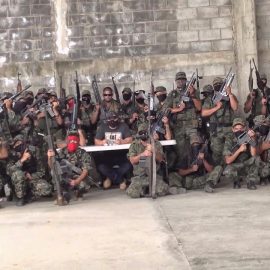Interesting times. There’s a lot of backlash building against Amazon over the Parler fiasco. And while it’s entirely understandable (and I might even agree on a certain level), it presents some serious logistical problems for many of us. Amazon isn’t just a monolithic, faceless, leftist corporation. It’s a set of infrastructure that a lot of indies and small businesses use. I’m one of them. Amazon has been the 800lb gorilla in the room for some time now, and, like it or not, there aren’t a lot of good alternatives out there. The granola-eaters have been pushing “Bookshop.org” for a while, but they take a much larger cut than Amazon. It’s entirely possible that the backlash might amount to a drop in the bucket. Inertia is a real thing, and people tend to forget outrage for convenience over time. But it is only prudent to start looking at alternatives. Unfortunately, there aren’t a huge number. The obvious one would be simply to start publishing here, through AmericanPraetorians.com. I already sell paperbacks through the shop (though currently not many). I’d have to move ebooks there, as well, and (and here’s the hard part), figure out marketing. Locals.com has been brought up as a
The True Legacy of the Cold War

A lot of people see the Cold War as distant history. There was even one political scientist/economist who wrote a book in 1992 claiming that the end of the Cold War was “The End of History.” Obviously, that thesis didn’t age well. But even leaving aside the nonsense that with the collapse of the Soviet Union, a new age of democracy and peace had dawned, a lot of us still see a rupture between the Cold War and the present strategic situation. There is no such rupture, though. History doesn’t work in “eras” except in high school textbooks. Yes, this is in reference to my last post. An expansion, if you will. If you want to understand why we seem to be trapped in “endless war,” then you need to understand what happened since World War II, and how that has contributed to where we are now. The Cold War has been described as the multi-decade tensions between NATO and the Warsaw Pact, marked by espionage, massive conventional forces staring at each other across the Iron Curtain, and the Mutually Assured Destruction of thousands of nuclear weapons pointed in both directions. And those were part of it. But the Cold
The Irregular Side of Future War

So far, the Maelstrom Rising series has mostly focused on the fact that conventional combat in future war is anything but dead. But there’s an irregular side to it, too, and the future is going to feature as much of the irregular, asymmetric side as the conventional, combined-arms side. There’s an article over on Borderland Beat about just that side of warfare, a side that is becoming increasingly prevalent in the modern world. Future conflicts will mostly be waged by drug cartels, mafia groups, gangs, and terrorists. It is time to rethink our rules of engagement. Wars are on the rebound. There are twice as many civil conflicts today, for example, as there were in 2001. And the number of nonstate armed groups participating in the bloodshed is multiplying. According to the International Committee of the Red Cross (ICRC), roughly half of today’s wars involve between three and nine opposing groups. Just over 20 percent involve more than 10 competing blocs. In a handful, including ongoing conflicts in Libya and Syria, hundreds of armed groups vie for control.
